|
Module 27 |
Updated: 07/06/2005 |
|
Lighting can emphasize important details or hide them. It can flatter a subject by bringing out positive attributes, and it can de-emphasize or hide less attractive attributes. Lighting can even impart a sinister and hostile look. It all depends on how you choose to use the concepts we'll be covering in the next few modules. Television is based on the medium of light; in fact, without light there could be no video. Just as sound must be skillfully controlled in audio production, light must be expertly controlled in television. As video—especially HDTV—has begun to emulate the more artistic dimensions of film, there has been a greater emphasis on creative lighting. But, before you can successfully control light, you need to understand and control its three basic characteristics:
In this module we'll cover the first of these — |
|
Coherence, often called quality, is the hardness or softness of light. Light quality is probably the least understood and the most neglected of the three variables.
In the photos above the objects are
exactly the same. Two of the variables of light are also exactly the same:
intensity and color temperature. The only difference is the third variable: the
coherence of the light. The first photo was shot with soft light, the second with
a hard light source. (In Module 35, "Altering Appearances," we'll look at additional
factors that can affect the appearance of subject matter.) Hard Light Light that is transmitted directly from a small point source results in relatively coherent (parallel) rays. This gives the light a hard, crisp, sharply defined appearance. The light from a clear, unfrosted light bulb, a focused spotlight, or the noonday sun in a clear sky, all represent hard light sources.
Note in the photo on the left how the writing stands out. Also note the clearly defined shadow of the flower at the bottom of the photo. Compare this photo with the one in the section below (with soft light) where the letters are hard to read and the shadow of the flower has all but disappeared. Several types of lighting instruments are used in TV to create hard light, including the beam-spot projector and the ellipsoidal spotlight.
Soft (diffused) light has the opposite effect. As shown in the photo on the left below, soft light tends to hide surface irregularities and detail.
Soft light sources are used in production to create a broad, even area of light. In the field, videographers often rely on umbrella reflectors (on the right, below) to create a soft lighting effect. As you can see, this is simply a light bounced off the inside of a silver or white, umbrella-like reflector. The illustration below on the left shows a much heavier soft light that is commonly hung from the grid in studios.
A soft light source placed close to the camera minimizes surface detail. The effect is commonly referred to as flat lighting. Although it has certain applications, especially in extreme
closeups of objects where shadows would obscure important details, flat lighting
leaves subject matter somewhat "dimensionless." When used over a large area, it
can impart an arid and sterile-looking appearance. There are a few occasions when ultra-soft lighting is necessary to keep video equipment from exceeding its brightness or contrast range limitations and compressing (losing) important detail.
|
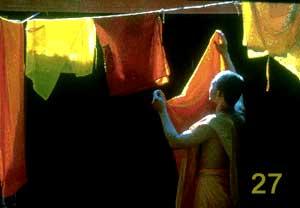

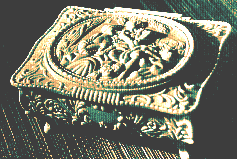
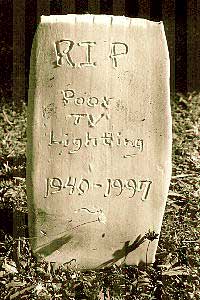 Hard light casts a sharp, clearly defined shadow. When hard light is used to illuminate
a face, imperfections in the skin stand out. The result is less than flattering.
But in other applications, such as bringing out the texture in leather, or the engraving
on a piece of jewelry, this can be an advantage.
Hard light casts a sharp, clearly defined shadow. When hard light is used to illuminate
a face, imperfections in the skin stand out. The result is less than flattering.
But in other applications, such as bringing out the texture in leather, or the engraving
on a piece of jewelry, this can be an advantage. 
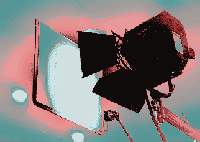
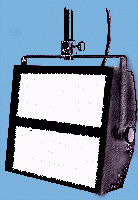

 Since soft light tends to hide lines, wrinkles and blemishes, it's desirable in
doing glamour work. The photo of the model on the left was shot with soft light.
Since soft light tends to hide lines, wrinkles and blemishes, it's desirable in
doing glamour work. The photo of the model on the left was shot with soft light.

